Did you know dogs trained with positive reinforcement are up to 400% more likely to display good behavior? With this powerful fact in mind, positive reinforcement training is taking center stage as the modern, humane, and scientifically-backed solution for dog owners seeking lasting obedience and a stronger dog-owner bond. This comprehensive guide unpacks the science, techniques, and real-world strategies behind positive reinforcement training, helping you transform your dog’s behavior while building trust and joy in every training session.
Transforming Dog Training Success With Positive Reinforcement Training
"Did you know dogs trained with positive reinforcement are up to 400% more likely to display good behavior? Discover how this modern approach is revolutionizing dog training."
- Enhances communication
- Builds trust
- Reduces stress for your dog

Positive reinforcement training has revolutionized the way dog owners and trainers approach dog obedience . Unlike outdated punishment-based methods, this approach emphasizes rewarding your dog's good choices, teaching that when good things happen after a desired behavior, they are more likely to repeat it. Dog trainers worldwide have noted significant improvements in dog behavior, communication, and the human-canine relationship using this technique. Enhancing trust and reducing stress , positive training sessions encourage your pet's willingness to learn and cooperate, making each session productive and enjoyable.
Practical examples demonstrate its impact: from teaching basic commands like "sit" and "stay" to reshaping complex behavioral challenges, positive reinforcement training proves highly effective. As you begin, you'll notice shifts in your dog's attentiveness and responsiveness—helpful for both new and experienced dog owners. With the right approach and the right rewards—such as training treats , verbal praise, or favorite toys—you can unlock your dog's potential for learning and nurture a lifelong habit of good behavior.
Understanding Positive Reinforcement Training: The Science and Key Principles
Defining Positive Reinforcement Training and Its Role in Dog Obedience
Positive reinforcement training centers on the simple principle: reward the behaviors you want to see more often. In practice, this means providing your dog something they love—like a treat, a toy, or affection—immediately after they perform a desired behavior . As a result, dogs quickly learn that repeating that behavior leads to positive outcomes. This training method is scientifically grounded and supported by animal behaviorists such as Karen Pryor , who champion its effectiveness for building good habits and reducing problem behaviors. By focusing on what your dog does right, obedience and mutual respect develop naturally, laying the foundation for a harmonious relationship.
The most effective dog trainers leverage positive training to make learning an enjoyable and rewarding process. When you consistently deliver a reward after a good response, you strengthen your dog’s understanding of what’s expected. Over time, your dog will actively seek opportunities to earn rewards, making obedience easy for both of you. This principle applies at every stage, from puppies learning basics to adult dogs polishing advanced skills.
Distinguishing Positive Reinforcement Training From Negative Reinforcement in Dog Training
Understanding the difference between positive reinforcement and negative reinforcement is crucial for any responsible dog owner or dog trainer . Positive reinforcement involves adding something pleasant (like a treat) after a behavior to increase its frequency. In contrast, negative reinforcement removes something unpleasant as a reward, which can sometimes cause confusion or stress. Although both are considered forms of reinforcement training , research consistently finds that positive approaches yield happier, more engaged pets.
For example, if you want your dog to sit, a positive method might be giving a training treat when they do; a negative method might be releasing leash tension only when they sit. While both methods can teach obedience, positive reinforcement fosters a stronger emotional bond and promotes more reliable results. Moving away from outdated correction-based training helps create a positive environment where your dog can flourish.
The Psychology Behind Reinforcement Training: Why Dogs Respond to Positive Training
The psychology of reinforcement training is rooted in how dogs learn—by associating actions with consequences. Dogs are keen observers, quickly realizing that their choices influence outcomes. When good behavior is consistently met with rewards, a process called operant conditioning occurs. This psychological mechanism makes it more likely dogs will repeat those rewarded behaviors. Positive reinforcement also taps into the primary motivators for most dogs: food, play, and affection.
Additionally, positively reinforced dogs experience less anxiety, since they are never punished for mistakes but rather guided toward correct actions. This not only helps with obedience but also improves overall well-being and trust. Leading authorities like Karen Pryor advocate for these methods, noting that rewarding your dog for doing the right thing creates confident, well-adjusted companions—whether you’re teaching your dog to stay calm around strangers or learn advanced agility skills.
Video: The Science of Positive Reinforcement Training in Dog Training
For those who prefer visual learning, numerous online videos demonstrate the psychology and application of positive reinforcement training . From expert trainers to real-life dog owners, these tutorials clearly outline how rewards, timing, and repetition shape behavior and communication.
How Positive Reinforcement Training Methods Work With Dogs
Practical Steps to Apply Positive Reinforcement in Dog Training

Ready to train your dog with positive reinforcement? Start by identifying behaviors you want to encourage, such as sitting calmly or coming when called. Next, choose a reward that your dog likes —be it a high-value treat, their favorite toy, or enthusiastic verbal praise . During training sessions , wait for the desired behavior and immediately provide the reward once it occurs. Consistency is crucial, especially during the early stages, so your dog makes the clear connection between the behavior and good things happening.
Gradually increase the challenge by asking for longer stays, greater focus, or performing tasks in distracting environments. Use a marker like a clicker or a cheerful “yes!” to capture the exact moment your dog succeeds. Remember, the goal is to set your dog up for success, avoiding frustration and building a strong habit of listening and responding. As you progress, pay attention to what motivates your dog and adjust your rewards for best results.
Timing and Consistency in Positive Reinforcement Training
The effectiveness of positive reinforcement training hinges on timing and consistency. The reward must come instantly after the desired behavior —even a few seconds’ delay can weaken the association. That’s why experienced dog trainers rely on tools like clickers or marker words to pinpoint precisely when the behavior occurred. This clear feedback helps your dog quickly understand which actions earn rewards.
Consistency means always rewarding a behavior when you’re teaching it, and responding the same way each session. This reduces confusion and ensures your dog builds confidence. Over time, you can gradually reduce the frequency of rewards, transitioning to a variable schedule to maintain strong performance and prevent your dog from losing interest.
Types of Rewards: Training Treats, Toys, Praise, and Affection
Finding the right reward is key to effective reinforcement training . Training treats are often the most motivating, especially if they are small, soft, and irresistible to your dog. However, some dogs are equally driven by a quick game of tug, a favorite toy, or a moment of affection. Verbal praise (“good dog!”) and physical affection can also be powerful reinforcers, especially when paired with other rewards.
Rotate rewards to keep every training session exciting and to prevent your dog from getting bored. Pay attention to what your dog values most—they’ll work harder for what they love! Ultimately, using a mix of treats, toys, and attention will help your dog stay engaged and eager to learn new behaviors.
"Rewarding good behavior makes a lasting impression on your dog’s willingness to learn and cooperate."
The Four Types of Positive Reinforcement in Dog Training
Applying Variable, Fixed, Continuous, and Intermittent Reward Schedules
There’s more to positive reinforcement training than simply handing out treats. Dog trainers often use different reward schedules to strengthen and sustain behaviors. The four main types are variable, fixed, continuous, and intermittent. In the beginning, continuous reinforcement (rewarding every time) helps establish new skills. As your dog becomes proficient, shifting to fixed or variable schedules (rewarding after a set number or a random number of responses) makes behaviors even more durable and less reliant on constant rewards. Intermittent schedules add unpredictability, making obedience “stickier” and more reliable in different situations.
Knowing which schedule to use and when is a hallmark of effective dog training . By gradually increasing the unpredictability of rewards, you keep your dog motivated without overwhelming them. This strategic approach prevents boredom and helps dogs learn that listening is always a good bet, even if the big treat doesn’t appear every time.
| Type | Description | When to Use | Example |
|---|---|---|---|
| Continuous | Reward given every time the desired behavior occurs | Teaching new behaviors | Treat every time your dog sits |
| Fixed | Reward given after a set number of correct responses | Building consistency after learning | Treat after every 3 sits |
| Variable | Reward given after a random number of responses | Ensuring lasting obedience | Treat after 2, then 5, then 3 sits, etc. |
| Intermittent | Reward given only occasionally for the correct behavior | Maintaining skills over the long term | Treat offered unpredictably during walks |
Video: Demonstration of Each Positive Reinforcement Type in Real Life Dog Training
Watch leading dog trainers demonstrate how to apply each reward schedule, adjusting their approach as dogs learn and behaviors become more reliable. Videos reveal how quick, well-timed rewards can help cement everything from sit-stays to advanced tricks.
Common Examples of Positive Reinforcement Training in Action
Teaching Good Behavior: Sit, Stay, and Recall with Positive Reinforcement

Some of the most powerful examples of positive reinforcement training come from everyday obedience. To teach "sit," simply wait for your dog to offer the behavior, then immediately mark and deliver a reward. Over time, your dog will enthusiastically perform the action, keen for their next treat or bit of praise. Building up to "stay" or reliable recall ("come") follows the same process: reward good choices and increase difficulty gradually.
Every successful dog trainer knows that teaching your dog to listen relies on immediate feedback, high-value rewards, and lots of repetition. Before long, these good behaviors become second nature—both in calm environments and around distractions. Real-life stories and training videos offer lots of inspiration for what’s possible!
Encouraging Good Manners and Reducing Unwanted Behaviors
Beyond basic obedience, positive reinforcement training is excellent for shaping good manners—such as polite greetings, loose leash walking, or waiting at doors. Whenever your dog offers a calm, appropriate choice, marking and rewarding helps reinforce these habits. Over time, your dog learns that good behavior leads to wonderful outcomes, while unwanted behaviors get no response or simply redirect to suitable alternatives.
Instead of punishing bad behavior, shift the focus to what your dog does well. Small steps, such as sitting before getting attention, teach your pup that good things happen when they make smart choices. This proactive approach reduces frustration and builds lasting manners.
Utilizing Training Treats and Indirect Rewards
Success with reinforcement training depends on using highly motivating rewards in creative ways. Some dogs learn better with toys, play, or outside adventures as their prize. Indirect rewards, like opening the door for a polite sit, help generalize good behavior to real-life scenarios. In these cases, you’re teaching your dog that their actions influence not just treats, but also privileges they value every day.
- Training treats used effectively:
- Small, soft, and high-value
- Delivered immediately after the desired behavior
- Changed or rotated to maintain interest
The Role of the Professional Dog Trainer in Positive Reinforcement Training
Choosing a Dog Trainer Specialized in Positive Training
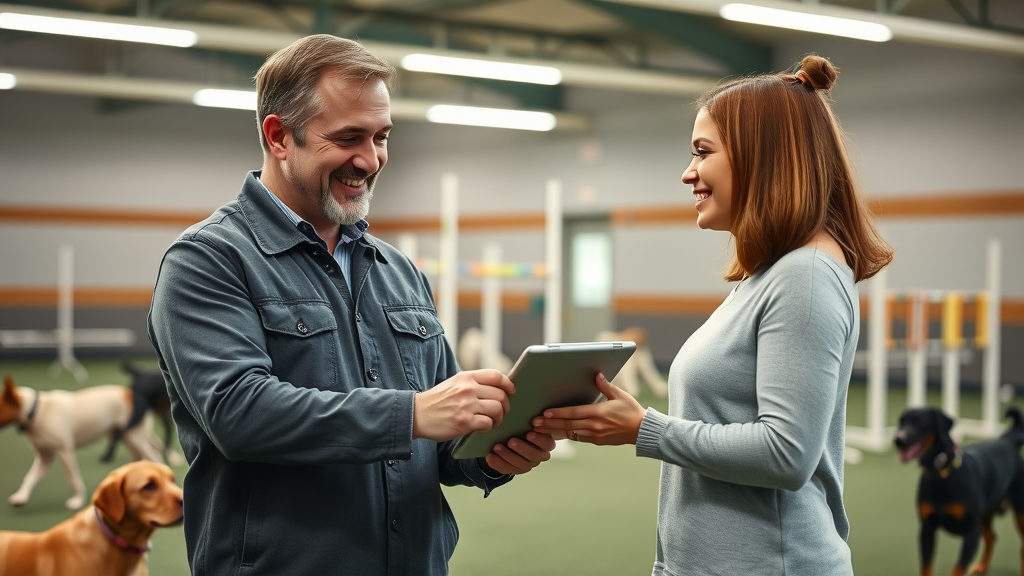
Partnering with a skilled dog trainer can accelerate your success with positive reinforcement training . Look for trainers who clearly outline their methods, have certifications from reputable organizations, and demonstrate compassion for both dogs and owners. These positive trainers focus on rewards, clear communication, and personalized plans suited to your dog’s unique personality and needs.
A reputable dog trainer will openly discuss their approach, explain reward schedules, and show you how to handle setbacks. Don't hesitate to ask about their experience, references, or results with similar cases. Your choice of trainer can make all the difference in your dog’s progress and overall enthusiasm for learning.
Questions to Ask Your Dog Trainer About Positive Reinforcement Methods
When interviewing a dog trainer , ask specific questions to ensure they are well-versed in positive training . Good questions include: What kind of rewards do you use most often? How do you individualize your approach for different dogs? How do you handle mistakes or setbacks? Listening for answers that prioritize the dog’s comfort, safety, and motivation will help you find the best fit for your family.
Ask to see a demonstration or testimonials from previous clients. The right trainer should be patient, encouraging, and ready to guide you through each stage of reinforcement training .
Working Together: Owners, Dog Trainers, and Reinforcement Training
Success in positive reinforcement training depends on teamwork between the owner and the trainer. By practicing skills at home and following your trainer’s guidance, you ensure that progress made during lessons is carried over to real life. Communication is key: share what works, what doesn’t, and celebrate small wins together.
Building a support system with your dog trainer helps keep everyone motivated and informed. This collaborative approach empowers both you and your pup for long-term success, creating a happy, well-trained dog and a more confident owner.
Comparing Positive Reinforcement Training With Other Dog Training Approaches
Negative Reinforcement Versus Positive Reinforcement: What Research and Experts Say

In the world of dog training , the debate between positive reinforcement and negative reinforcement remains lively. A growing body of research, along with statements from leading dog trainers , overwhelmingly favors positive methods for their humane approach and long-term effectiveness. Studies show that dogs taught with positive reinforcement not only learn faster but also display less anxiety, aggression, or avoidance compared to those trained with aversive techniques.
Experts highlight that negative reinforcement—which removes an unpleasant stimulus after a desired action—can create uncertainty and even damage the dog-owner bond. In contrast, positive methods make learning fun and non-threatening, leading to consistent, eager participation.
Balanced Training: When to Use Positive and Negative Reinforcement Approaches
Some trainers advocate for balanced training, which integrates both positive and negative reinforcement. While this approach can yield results in select, experienced hands, the risk of error, stress, or setbacks makes it less suitable for most dog owners. Positive reinforcement should always be the default, with corrections or negative reinforcement reserved for complex cases and managed with great care.
Responsible trainers urge owners to fully explore positive strategies and only consider alternatives if progress stalls—always prioritizing safety, welfare, and the unique needs of your dog.
| Approach | Pros | Cons |
|---|---|---|
| Positive Reinforcement |
|
|
| Negative Reinforcement |
|
|
"Science favors positive reinforcement: it creates strong, happy dog-owner relationships and lasting results." – Certified Dog Trainer
Designing a Positive Reinforcement Training Plan for Your Dog
Setting Goals for Positive Reinforcement Training Outcomes

Setting clear goals is the first step toward success with positive reinforcement training . Start by outlining the specific behaviors you want to teach, such as polite greetings, reliable recall, or calmness around guests. Break these into manageable milestones and celebrate when achieved. Using a planner or checklist helps track progress and keeps you motivated for every session.
Be realistic and patient—each dog learns at their own pace, and every success, however small, is a step in the right direction. Defining your objectives ensures you and your dog stay focused and take pride in ongoing improvements.
Tracking Progress: Behavior Logs and Reinforcement Schedules
Keeping a simple behavior log allows you to monitor which training techniques and rewards deliver the best results. Record sessions, note your dog’s responses, and adjust your reinforcement schedule for maximum impact. Tools like apps, journals, or wall charts can make this process fun and easy for the whole family.
As your dog improves, update your notes to reflect new challenges or skills mastered. This documentation will help fine-tune your approach and maintain consistency, even as you add more advanced behaviors to your training plan.
Adjusting Positive Reinforcement Strategies as Your Dog Learns
As your dog masters new skills, you’ll need to adapt your positive reinforcement training strategies. Reduce the frequency of treats, mix up the types of rewards, and increase difficulty by adding distractions or lengthening stays. This keeps your dog interested and ensures behaviors become habitual rather than dependent on immediate rewards.
If progress stalls, rethink your approach—are rewards exciting enough? Is the training environment too challenging? Staying flexible and observant guarantees ongoing progress and keeps training enjoyable for both you and your dog.
Popular Tools and Resources for Successful Positive Reinforcement Training
Top Training Treats, Clickers, and Interactive Toys
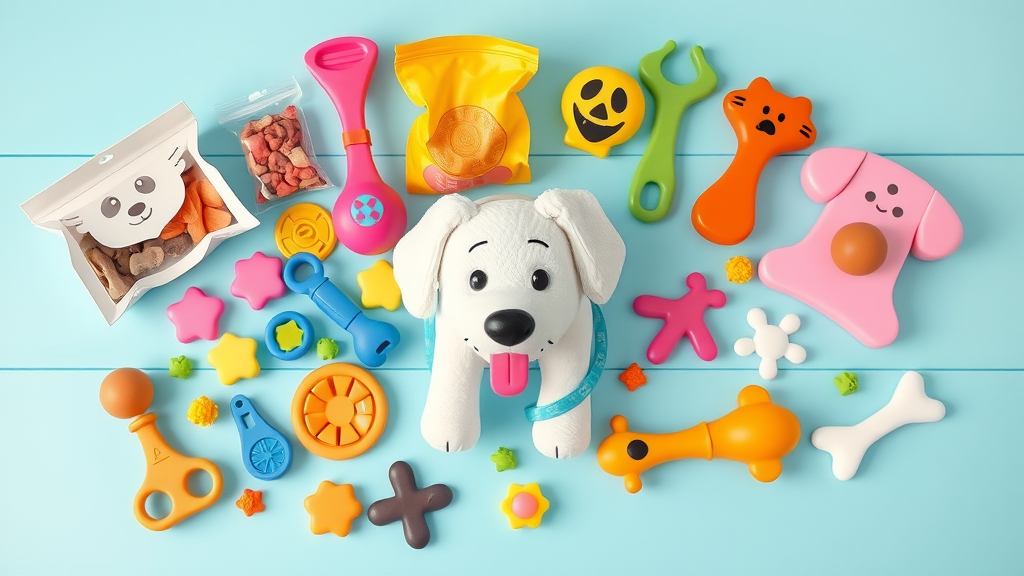
Every dog trainer has their favorite training tools , and the right equipment makes all the difference. High-value training treats are a must—look for small, soft bites packed with flavor. Clicker training is another popular method, marking the exact moment your dog gets it right. Don’t underestimate the power of toys or games as motivators, particularly with active breeds or playful pups.
Rotate your tools to keep sessions fun and engaging. Many online pet stores and trainers offer curated kits to get you started, ensuring you have everything needed for at-home success.
Must-Read Books and Online Courses on Positive Reinforcement
Empower yourself with knowledge from leading experts. Books from respected trainers, such as Karen Pryor and contemporary behaviorists, offer step-by-step guidance, troubleshooting advice, and inspiring real-world examples. Online courses—including videos and webinars—break complex concepts into easy-to-apply techniques. With these resources, both new and experienced owners can master the art of positive reinforcement training at their own pace.
Look for reviews, sample chapters, and course previews to ensure the content matches your needs. Invest in your education, and you’ll see the results in your dog’s transformed behavior.
Positive Reinforcement Tools in Action: Real-World Demonstration
Watching positive training tools in action inspires creativity and confidence. Many trainers post demonstration videos or host social media sessions to walk owners through live training scenarios. See firsthand how quick timing, a loaded treat pouch, and clear communication make reinforcement training both effective and enjoyable.
Practice alongside these demonstrations, adapting techniques to your dog’s temperament and learning speed. The key is making each session as rewarding for you as it is for your four-legged friend.
Troubleshooting Common Positive Reinforcement Training Challenges
Why Positive Reinforcement Training May Not Work Instantly
It’s important to remember that positive reinforcement training isn’t always a quick fix. Dogs are individuals, and some may take longer to learn or show improvement. Occasionally, lack of progress results from unclear cues, insufficiently motivating rewards, or training in a distracting environment. Patience is essential, as is a willingness to experiment with different training tools, session lengths, or reinforcers.
Recognizing that setbacks are natural allows both dog and owner to stay positive and focused on the long-term goal—building habits that truly last.
Solutions for Common Issues: Distracted Dogs, Lack of Motivation, Inconsistent Results
Common challenges in dog training include distractions, fading interest in rewards, or unpredictable performance. If your dog seems distracted, move to a quieter area and gradually reintroduce challenges. Experiment with new training treats or toys to reignite interest. Stay consistent by practicing daily, keeping each session short and upbeat. If inconsistency persists, revisit basic cues and reinforce successes before advancing to tougher tasks.
- Tips for overcoming training hurdles:
- Re-evaluate rewards
- Increase session frequency
- Reduce distractions during training
Case Studies: Positive Reinforcement Training Success Stories
How Rescue Dogs Thrive With Positive Reinforcement Training
Multiple rescue organizations report remarkable transformations using positive reinforcement training . Once-shy or reactive dogs blossom into confident and sociable companions. By rewarding small successes and creating a safe learning environment, these dogs quickly learn to trust and engage positively with both humans and other pets.
Rescue success stories remind us that it’s never too late to improve dog behavior using encouragement and gentle guidance.
Transformative Before-and-After Dog Training Journeys

Countless owners have documented their dog’s journey from unruly to well-mannered after switching to positive reinforcement training . Dogs who once ignored basic cues, jumped on guests, or pulled on leashes now perform calmly and eagerly. These “before and after” tales highlight the universal power of positive methods, regardless of age, breed, or past experiences.
The consistency and optimism of reinforcement training prove especially potent, enabling lasting change and deeper understanding between dogs and their families. Inspired by these journeys, dog owners everywhere are finding hope for even the most challenging cases.
Visual Testimonials: Owners Share Positive Training Outcomes
Many owners are proud to share their positive training victories—whether through videos, photos, or testimonials. These success stories offer motivation and proof that, with effort and support, every dog’s behavior can improve. Seeing transformation on screen or in person underscores why positive reinforcement training is celebrated as the gold standard for modern dog training.
Applying Positive Reinforcement Training to Puppies, Adult, and Senior Dogs
Tailoring Positive Reinforcement Training to Age and Personality
The flexibility of positive reinforcement training makes it ideal for puppies, adult, and senior dogs alike. Tailor your techniques—use shorter, more playful sessions for energetic puppies, while employing gentle praise and patience for older dogs learning new tricks or unlearning bad habits. Watch for what your dog responds to best, and never hesitate to adjust your strategies.
Understanding your dog’s individual motivations and limits ensures each session brings progress without stress. Your investment in adapting training pays huge dividends in happiness and cooperation.
Good Behavior Milestones by Age Group
Set reasonable expectations based on age: Puppies will master basics like sit, down, and recall; adults polish manners and build resilience to distractions; seniors can learn at their own pace and gain confidence with enrichment activities. Tracking milestones by age group allows for steady growth and a sense of achievement for both dog and owner.
Celebrate each milestone, and remember every stage is an opportunity for connection and growth through positive reinforcement training .
Avoiding Pitfalls: The Most Common Mistakes in Positive Reinforcement Dog Training
- Top mistakes in positive reinforcement training:
- Inconsistent reward timing
- Using the wrong treats
- Skipping steps or rushing
Beware these common pitfalls: failing to deliver rewards at the exact right moment, giving treats your dog doesn’t value, or progressing too quickly through training steps. Avoiding these errors ensures your dog’s learning stays on track and builds confidence.
If you notice progress slowing, check for these issues and make simple adjustments for improved results. Even experienced trainers benefit from reviewing the basics now and then!
People Also Ask: What are the 4 types of positive reinforcement?
Answer: The four types of positive reinforcement in dog training are variable, fixed, continuous, and intermittent. Each type refers to how often and under what circumstances rewards are delivered, which influences how quickly and reliably dogs learn new behaviors.
People Also Ask: What is positive reinforcement in training?
Answer: Positive reinforcement in dog training involves rewarding your dog immediately after they perform a desired behavior, which increases the likelihood they will repeat that behavior. Common rewards include treats, praise, and play.
People Also Ask: What is an example of positive reinforcement learning?
Answer: A classic example of positive reinforcement learning is giving your dog a treat right after they sit on command. This immediate reward helps them associate sitting with a positive outcome.
People Also Ask: What is the 1/2/3 dog training method?
Answer: The 1/2/3 dog training method is a structured routine where you gradually shape behavior by increasing expectations step by step (e.g., first rewarding a sit, then a sit and stay, then a sit-stay with added distractions), using positive reinforcement at every stage.
Frequently Asked Questions About Positive Reinforcement Training
- Can positive reinforcement training be used for all breeds? Yes, all breeds benefit from positive reinforcement training. Each dog may respond differently, so adjust your approach to match their motivation and learning style for optimal results.
- How long does positive reinforcement training take to show results? Results vary based on the dog and the behavior you’re working on. Some behaviors improve in just a few sessions, while others may take weeks. Consistency, patience, and using the right rewards accelerate progress.
- What if my dog doesn’t respond to treats as rewards? If treats don’t motivate your dog, experiment with toys, praise, or play. Find what your dog loves most—this will become your most effective reinforcer during training sessions.
- Is it too late to use positive reinforcement training with older dogs? It is never too late. Senior dogs can learn new behaviors and habits when training is adapted to their pace and physical ability. Positive reinforcement works for all ages!
Practical Takeaways for Implementing Positive Reinforcement Training in Your Dog’s Routine
- Start with basic commands
- Stay consistent
- Use high-value rewards
- Celebrate small achievements
Incorporating these key principles into daily routines ensures steadfast progress and transforms every training session into a bonding experience.
Summary: Why Positive Reinforcement Training is the Gold Standard in Modern Dog Training
"Positive reinforcement training paves the way for lasting obedience, deeper bonds, and happier homes for both dogs and their families."
Take the Next Step With Positive Reinforcement Training
- Ready to transform your dog’s behavior? Start your positive reinforcement journey today and watch your dog thrive. Seek guidance from a qualified dog trainer for personalized support.
To deepen your understanding of positive reinforcement training, consider exploring the following resources:
- “Positive Reinforcement Dog Training: The Science Behind Operant Conditioning”
This article from the American Kennel Club delves into the principles of operant conditioning, explaining how positive reinforcement strengthens desired behaviors in dogs. ( akc.org )
- “Positive Reinforcement Training: Why it Works”
Dupont Veterinary Clinic discusses the benefits of positive reinforcement training, including improved communication and increased bonding between you and your dog. ( dupontvet.com )
If you’re serious about enhancing your dog’s obedience and strengthening your bond, these resources offer valuable insights and practical techniques to guide your training journey.
 Add Row
Add Row  Add
Add 




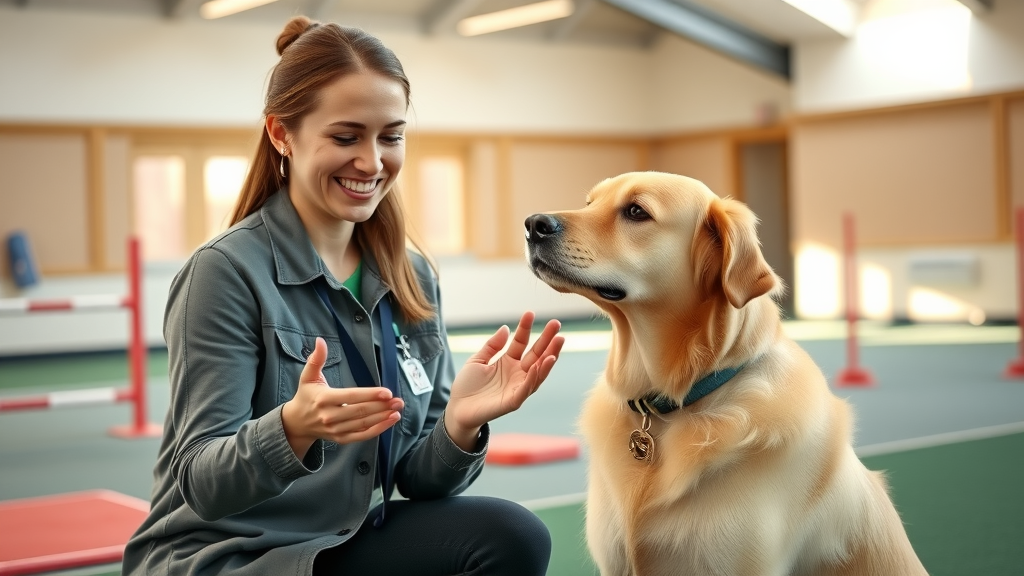
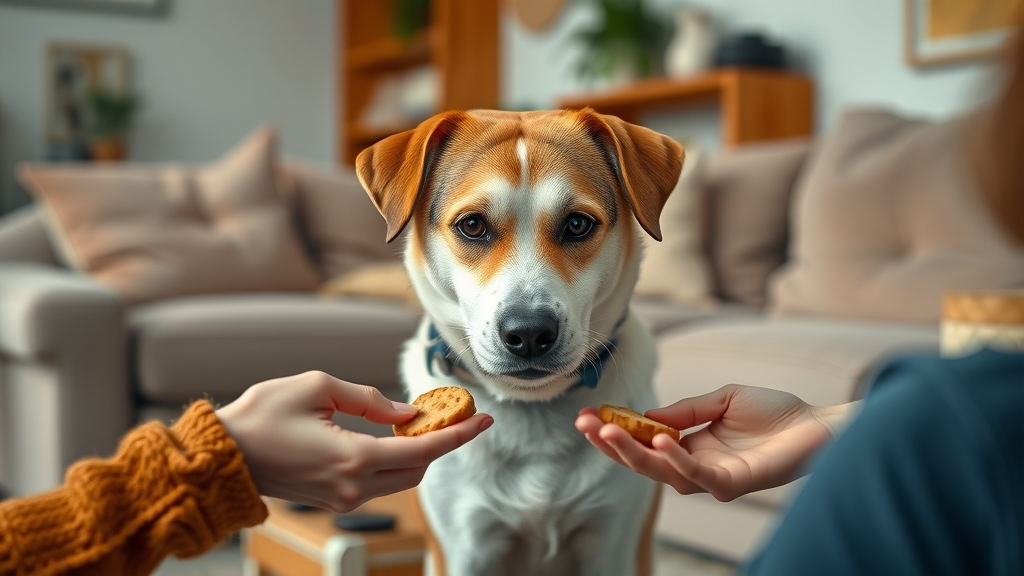
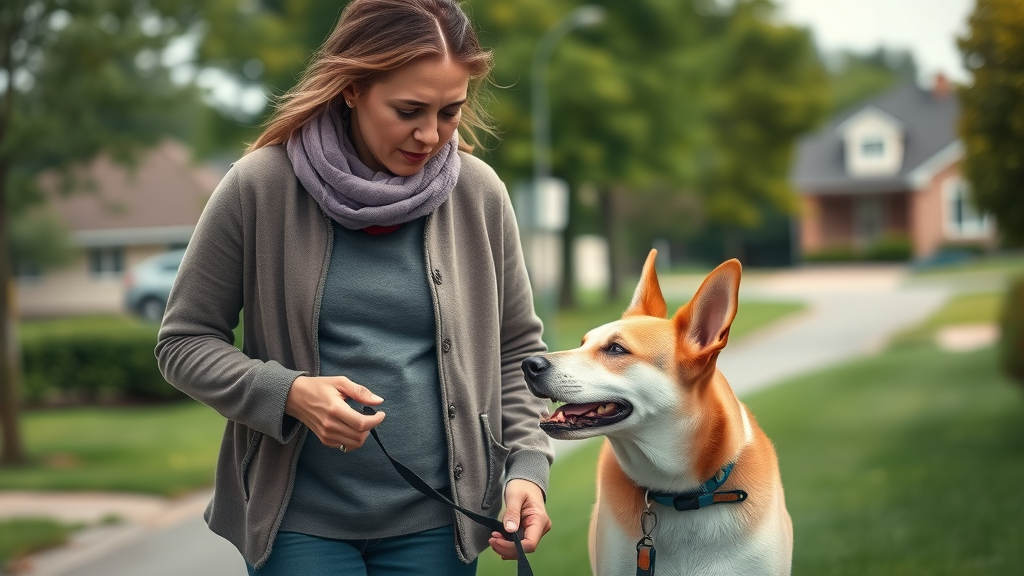

Write A Comment